Growing grapes in the Russian climate is impossible without winter shelter. Even winter-hardy varieties of vines die in severe frost without protection. Young plants are especially affected by lower temperatures. Failure to close the time of grape bushes often entails freezing or aging. Therefore, it is important to know when and at what temperature you need to cover the grapes for the winter.
Content
The need for preparatory activities
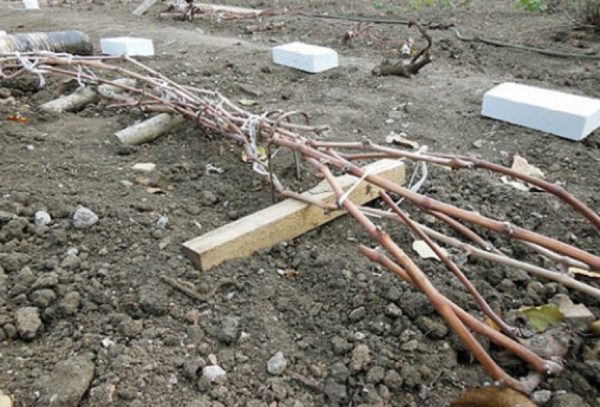 Preparation of a grape plant for the coming cold weather varies significantly depending on the characteristics and varietal characteristics. Among them there are very sensitive to lower temperature values and varieties with good winter hardiness. Of great importance are the climatic conditions of the growing region. Only after analyzing all the collected information can you build a plan for preparing the plant for winter frosts.
Preparation of a grape plant for the coming cold weather varies significantly depending on the characteristics and varietal characteristics. Among them there are very sensitive to lower temperature values and varieties with good winter hardiness. Of great importance are the climatic conditions of the growing region. Only after analyzing all the collected information can you build a plan for preparing the plant for winter frosts.
By the ability to withstand adverse weather during the winter months, all varieties of this crop are divided into the following subgroups:
- unstable to cold, when they do not withstand the cold to -10 degrees;
- unstable successfully winter in frosts down to -17 degrees with full preservation of the eyes;
- medium stable ones are able to successfully survive the winter while lowering the values to -21 degrees, saving up to 60% of the eyes;
- highly resistant species winter when cooling to -27 degrees, keeping eyes up to 80%;
- highly resistant are able to successfully survive the winter at temperatures up to -28 degrees, fully preserving the eyes.
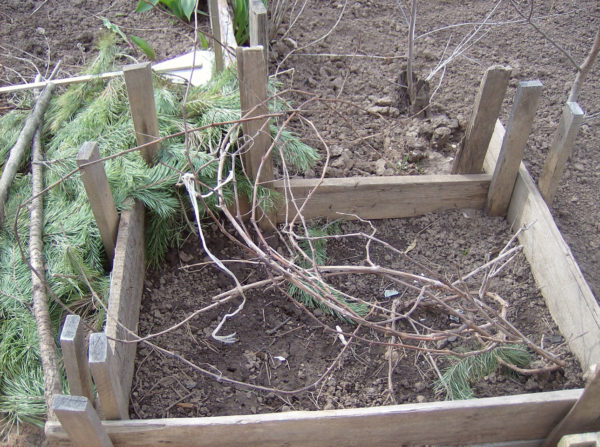 Preparing for the upcoming cold weather needs grapes of any variety, but the list of necessary events in each case is different. When determining work in the fall, they take into account that the roots of this culture are more sensitive to frost than the vine itself. Adult specimens, unlike young plants, more easily tolerate lower temperatures.
Preparing for the upcoming cold weather needs grapes of any variety, but the list of necessary events in each case is different. When determining work in the fall, they take into account that the roots of this culture are more sensitive to frost than the vine itself. Adult specimens, unlike young plants, more easily tolerate lower temperatures.
For areas with cold winters vineyard shelter perform necessarily. Indeed, there the temperature values in the winter months often fall below -30 degrees. Therefore, a reliable shelter can not do without a plant. Especially carefully insulated vineyards growing on sandy soil, due to the high percentage of freezing.
Frost and winter hardiness
The concepts of winter hardiness and frost resistance differ from each other. In the first case, they imply the immunity of the plant to bad weather conditions in winter. And in the second - how well the vine tolerates subzero air temperatures.
To improve winter hardiness in August, part of the stepsons are removed and the vines are fully ripened. For winter, grapes must be insulated. Shoots, the length of which did not exceed 2 m, are better preserved. Therefore, grapes are not watered abundantly and are not fed so as not to provoke a long and intensive growth. The last time the vine is abundantly irrigated in August.
Be sure to improve the winter hardiness of annual and biennial specimens. Such plants must be closed for the winter. The roundabout circle is necessarily covered with earth, and in winter the fallen snow is scattered. To get rid of dew roots, make holes. This measure strengthens deep roots.
Non-bearing specimens in August do not water and do not fertilize. From the rest, the crop is removed before the advent of frost.
Dangerous frosts for grapes
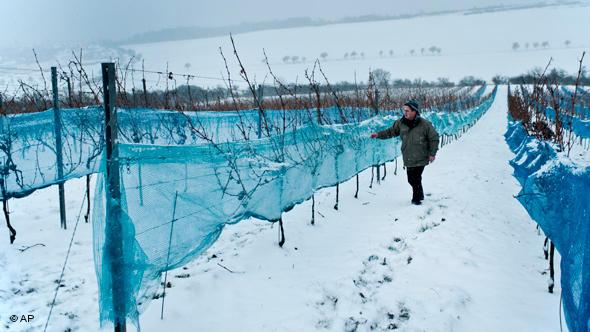 Having gone to the dormant stage, the vine bushes successfully withstand quite low temperatures without building a defense. However, this is not always enough for a successful wintering. Therefore, most table varieties are not covered before winter.
Having gone to the dormant stage, the vine bushes successfully withstand quite low temperatures without building a defense. However, this is not always enough for a successful wintering. Therefore, most table varieties are not covered before winter.
Most successfully cope with frosts are perennial boles and sleeves. The lashes of one year old are less resistant to frost. The grape buds of table varieties withstand temperatures from -15 to -24 degrees. At the same time, the central kidneys of the eye are most sensitive to frost, and substitute ones show greater stability. The most significant indicators of frost resistance are dormant buds of perennial vines.
In European grapes, the kidneys freeze when the temperature drops to -20 degrees, and the lashes die at -22 degrees. In old bushes, this figure reaches -26 degrees. The greatest frost resistance is demonstrated by varieties belonging to Vitis Amurenzis. They remain viable, even if the temperature drops to -40 degrees. In American grape varieties, frost resistance is -41 degrees.
At what temperature does the grape need shelter
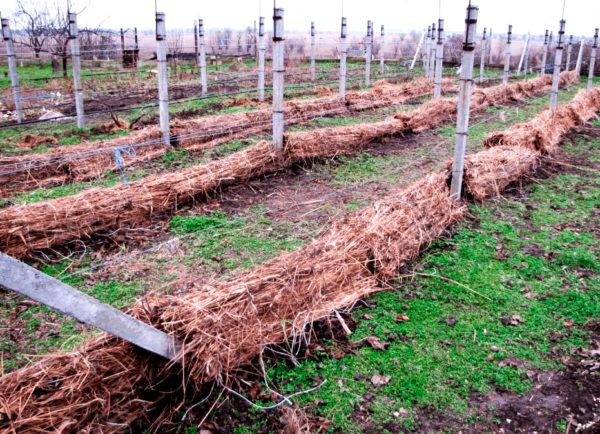 When determining the timing of covering winter grape plants, the territorial distribution of the region and the peculiarities of weather and climate are taken into account.
When determining the timing of covering winter grape plants, the territorial distribution of the region and the peculiarities of weather and climate are taken into account.
In areas with mild winters and warm climates, in the south of Russia, in Ukraine, in the Crimea, only varieties with poor resistance to frost and wind are covered. Preparatory work is carried out in November or early December. In areas of the middle zone, in Belarus or in the Volga region, the time for carrying out insulation works begins in early November.
Even earlier, they took over sheltering vines in the Bryansk and Leningrad regions and in the suburbs. Here, all preparatory measures are carried out immediately after dropping the leaves in the second half of October. In the north of Russia, in Siberia, in the Urals and in Transbaikalia, warming of grapes is carried out before the onset of frost and snowfall. Preparatory work is carried out in mid-October.
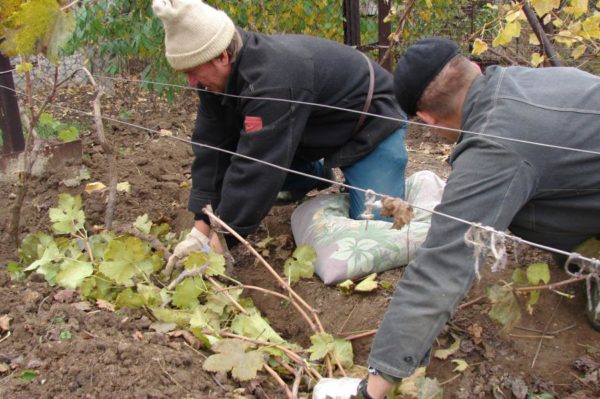 When asked at what temperature to cover the grapes for the winter in the middle lane, experts advise to wait until the average daily temperature drops to -5 ..- 8 degrees. To start the preparatory measures, such indicators are optimal. Then, at night, frosts occur up to -10 degrees, and in the daytime the air warms up to 0 degrees.
When asked at what temperature to cover the grapes for the winter in the middle lane, experts advise to wait until the average daily temperature drops to -5 ..- 8 degrees. To start the preparatory measures, such indicators are optimal. Then, at night, frosts occur up to -10 degrees, and in the daytime the air warms up to 0 degrees.
At this time, the grapes dump the foliage, nutrients, along with water, go underground to deep-lying roots, the buds of the plant fall asleep, the shoots become dry. Before due date cover the vine not necessary. The danger here is that any warming is able to provoke the awakening of the plant. The bush will lock, sap flow will begin and the plant will die partially or completely.
Too tighten with the preparation for winter is also impossible. In this case, the shoots of the plant dry out and break easily.
How to determine when to plant
When determining the time for the start of preparatory work, experienced gardeners advise carefully observing weather changes so as not to miss the right moment. Usually the first stage is carried out at the end of September, but if the region has a warm climate, this period is postponed to the beginning of October. The process of hardening and ripening of the vine is prolonged as much as possible.During this period, glucose is synthesized from starch. Sugar helps the plant successfully survive the winter.
If there is no hardening, it is highly likely that the grapes will not survive the winter, even with shelter. The first stage of preparation takes place at a temperature of 0 to +10 degrees. The next one comes when the temperature drops to -6 degrees. If it is not possible to perform one of the hardening stages due to spoiled weather, it is carried out under cover. Each period is 7 days or more.
Finally
Subject to the basic rules, determine the time shelter of grapes for the winter not difficult. The beginning of preparatory work coincides with the first frosts. You do not need to delay this in order to keep the buds and shoots alive. Timely events will guarantee a successful wintering and a rich harvest.




 Non-covering winter-hardy grape varieties for Moscow region
Non-covering winter-hardy grape varieties for Moscow region How to keep the vine in winter
How to keep the vine in winter When can I transfer grapes to another place in the fall
When can I transfer grapes to another place in the fall How to cover and prepare grapes for the winter in the suburbs
How to cover and prepare grapes for the winter in the suburbs